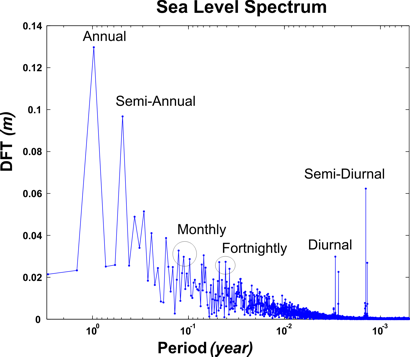Physical Oceanography of Alaska's Beaufort Sea
Inner Shelf Observations
We present here a few representative pictures from our mooring deployments. Additional figures and discussion about them are given in the Phase I Final Report.
Sea Level:
Sea level fluctuations due to the tides are small in the Beaufort; the principal semi-diurnal lunar tide (M2) amplitude is less than 7 cm. Storm surge amplitudes can exceed 1 m.

Temperature and Salinity:
Cold air temperatures and fall storms cool and mix the water column to the freezing point (approx. -1.8 deg C), at which point ice begins to form. The landfast ice normally set up in late October or early November at our mooring sites. Continued cooling slowly increases the salinity over the course of the winter to values often in excess of 35 (psu) while the ice thickens until late May. In the lowest panel, the transmissivity pulse of late May/early June could indicat the arrival of sediment-laden river water.

Currents:
Currents are generally strong and directed eastward or westward in the summer; large fluctuations are often tied to wind events. In the winter (beneath the landfast ice and near to shore), currents are small (< 10 cm/s) even in the presence of strong winds.


